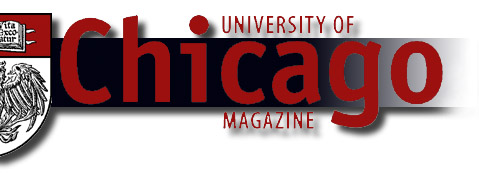|

Those kids
today
New research shows that today’s teenagers, contrary to their
portrayal in the media as baggy-pants-wearing slackers, comprise
what sociology professor Barbara Schneider has dubbed the “ambitious
generation”—a group of young people more eager than those
in the past to attend college and get good jobs.
The misconceptions have spread, she says, because some of those
ambitious teens give up on their dreams—partly as a result
of not getting enough guidance from parents and schools.
Schneider presents her portrait of today’s teens in a new
book called The Ambitious Generation: America’s Teenagers,
Motivated but Directionless (Yale). The book was co-authored
by the late David Stevenson, who was the assistant director for
social and behavioral sciences at the White House, and is based
on interviews and observations at 12 high schools across the country;
data from the Alfred P. Sloan Study of Youth and Social Development,
a national longitudinal study of 1,221 students in the sixth, eighth,
tenth, and 12th grades; and information gathered using an experience-sampling
technique in which students were paged at various times during the
day and asked to record their activities and thoughts.
Among their findings, Schneider and Stevenson show that teenagers
today are more likely than previous generations to spend time alone,
to feel bored and unengaged, and to change friends often. Their
aspirations also differ. More than 90 percent of high-school seniors
expect to attend some type of college, as compared to 55 percent
in the 1950s. Seventy percent today expect to work in professional
jobs, compared to 42 percent in the 1950s.
The problem with such high aspirations, point out the researchers,
is that the number of professional jobs available in the early part
of the next century is not expected to match the number of students
who say they wish to become doctors, lawyers, business executives,
and other professionals. By contrast, the number of jobs available
in service and administrative occupations should grow faster than
the number of adolescents who say they want those jobs.
The researchers further discovered in their interviews that students
at all levels have difficulty making decisions about their futures.
Too often, they found, counselors in high school limit their focus
to the college admissions process and infrequently help students
make career decisions, while parents also fail to thoroughly discuss
future job prospects with their children.
The result is an “ambition paradox,” conclude Schneider
and Stevenson, in which students with very high ambitions choose
an educational route with low odds of success. About 56 percent
of the students surveyed had “misaligned ambitions,” expecting
to obtain more or less education than needed for a certain field.
The Ambitious Generation urges adults to help students
develop “aligned ambitions.” According to the authors,
adolescents ideally should choose a career while in high school,
learn what education it requires, and then seek related mentors
and internships.
“Students with high ambitions who choose an education path
with low odds for successfully reaching their goals can make decisions
from which it is difficult to recover,” says Schneider. “Students
with aligned ambitions are more likely to successfully navigate
the transition from high school to college and to make choices that
increase the chances that they will realize their dreams.”—William
Harms
|



